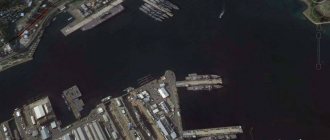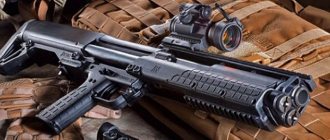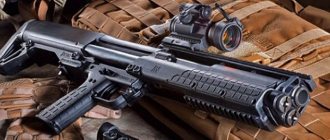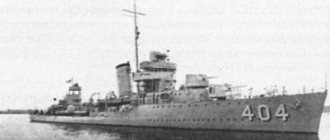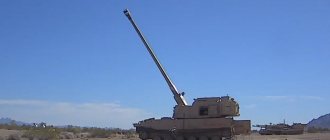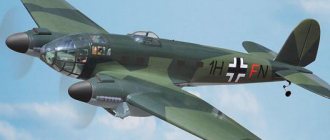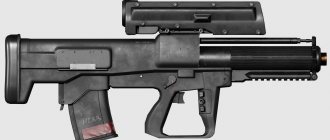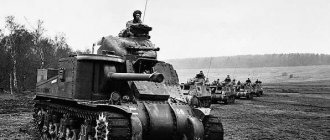Technologies for reducing visibility (stealth technology) are necessary to camouflage weapons and military equipment from detection by enemy radar.
There are several ways to convert electromagnetic waves into other types of energy, including absorption or scattering. Because of this, radio-absorbing materials are used as coatings for various surfaces: they reduce the reflection coefficient of electromagnetic waves.
One of the most common radio-absorbing materials (stealth coatings) is iron ball paint. This composition contains microscopic spheres coated with a magnetic composition. The effect is simple: the locator radiation is converted into heat, which makes it possible to reduce the visibility of the object. The SR-71 Blackbird reconnaissance aircraft was covered with similar material.
Resonant stealth coatings have a thickness of ¼ wavelength, which allows radiation to be reflected from the outer and inner surfaces of the coating. As for non-resonant coatings, they scatter radiation or reflect it in different directions.
For obvious reasons, neither Russia nor the United States particularly advertise the technologies used to create the latest fighters. And yet, certain information about them, including the composition of visibility-reducing coatings, ends up in the press. Thus, a year ago it became known that the cockpit of the Russian 5th generation multirole fighter Su-57 received a new stealth coating. Rostec assured that the new composite material used in the coating reduced the visibility of the cabin by 30%. The coating doubles the absorption of radar waves.
Radio wave reflection areas.
Stealth coating is applied to the canopies of Su-57, Su-30, Su-34, Su-35, MiG-29K aircraft. It consists of layers of metal oxides with a thickness of 70-90 nm. Thanks to it, the visibility of the aircraft to enemy radar is reduced, and the fighter pilot is protected from heat, ultraviolet radiation and other negative influences. The latter is also very important. Because the coating reduces the thermal component of solar radiation by three times, and the pilot’s exposure to ultraviolet radiation is reduced by almost six times.
Modern radio-absorbing coatings differ quite significantly from those used 10 years ago. In particular, they have a variable thickness along the profile, a complex structure with varying values of dielectric and magnetic permeability both along the thickness and along the surface of the skin. The composition of the coating makes it possible to modify the electromagnetic wave incident on it so that it cannot transmit information to the enemy that could “reveal” the parameters of military equipment.
Most of the aircraft's surface is treated using paint and varnish technologies. A.N. Lagarkov and M.A. Pogosyan in one of their articles noted the importance of ferromagnetic fine fillers with given values of magnetic permeability. Plasma technologies are also widely used. For example, the scattering coating on the canopy of a fighter aircraft is created using plasma-vacuum technology.
F-22. Coverage problems.
Where has stealth gone?
The history of “stealth” in the USSR is a very complex thing in itself and requires a long and clear analysis.
On the one hand, the work “The Method of Edge Waves in the Physical Theory of Diffraction” was published in 1962 - and on its basis the Soviet school of “stealth” could well have developed (many are even sure that it formed the basis of American work on “stealth”, but this is wrong). On the other hand, no work began until the mid-70s. Ours was only forced to become more active by intelligence information about the start of the American XST program (which will ultimately lead to the appearance of the F-117).
Testing of the F-117 model already at the Russian-Soviet radar stand
Research into radio stealth in the USSR has been conducted since the late 70s and has brought significant results. Stealth reduction measures have been applied to all Soviet projects since the early 1980s. One of the first was the Tu-160 bomber.
But real stealth aircraft - to look like masterpieces of cubism - never came from the Union. Why?
Unfortunately, while most of the documents from the late Soviet period are deeply secret, it is impossible to give an exact answer. But you can try to tell fortunes.
Reduced ESR, which was achieved on a number of Soviet and Russian projects
There is an unverified claim that Soviet engineers believed that it was impossible to reduce the fighter's RCS (the effective dispersion area, or, in simple terms, the size to which the aircraft would correspond for radar) below 0.3 meters. Someone will immediately say that this is how they exposed the American deception and there is no “stealth” in reality. But time passed, and the whole world (not excluding us) began to design aircraft “invisible” to radar, including those with an ESR of less than 0.3 meters.
According to some Western estimates, the ESR of the newest Russian drone, Okhotnik-B, is less than 0.1 meters. And its dimensions are quite similar to those of a manned aircraft
It is quite possible that behind such confidence lay a simple lack of time. As the American history of work on stealth shows, despite the relative simplicity of the theory, achieving real results is very difficult. Especially if you design airplanes the old fashioned way, not with the help of computers. The Americans first tried to make stealth back in the 50s - and nothing worked out. We tried it in the 60s - and again there was no result. It was only in the mid-70s, after spending a lot of time creating special software, that success was achieved. Perhaps the USSR encountered similar problems when they tried to design “stealth” by eye. But unlike the Americans, who did not give up trying even after two decades of failure, ours could calm down with the thought that “stealth” is not as terrible as it is painted out to be.
Some American stealth projects of the 60s cannot be distinguished from modern ones. But their radio stealth was very so-so
Visible invisibles: the most famous stealth aircraft
In March 2016, Japan plans to complete tests of the new generation Advanced Technology Demonstrator X aircraft, created using stealth technologies.
The Land of the Rising Sun will become the fourth in the world to be armed with stealth aircraft. Previously, only Russia, China and the United States could boast of having combat aviation systems created using visibility reduction technologies. The presence of stealth technologies is one of the mandatory parameters of fifth-generation aircraft.
The essence of stealth technology is to reduce visibility in the radar and infrared ranges. The effect is achieved due to a special coating, the specific shape of the aircraft body, as well as the materials from which its structure is made.
Radar waves, emitted, for example, by the transmitter of an anti-aircraft missile system, are reflected from the outer surface of the aircraft and received by the radar station - this is radar signature.
It is characterized by the effective dispersion area (ESR). This is a formal parameter, which is measured in units of area and is a quantitative measure of the property of an object to reflect an electromagnetic wave. The smaller this area, the more difficult it is to detect an aircraft and hit it with a missile (at least its detection range decreases).
For older bombers, the ESR can reach 100 square meters; for a typical modern fighter it ranges from 3 to 12 square meters. m, and for stealth aircraft it is about 0.3-0.4 sq. m.
The EPR of complex objects cannot be accurately calculated using formulas; it is measured experimentally using special instruments at test sites or in anechoic chambers. Its value strongly depends on the direction from which the aircraft is irradiated, and for the same flying machine is represented by a range - as a rule, the best values for the scattering area are recorded when the aircraft is irradiated in the forward hemisphere. Thus, there cannot be accurate ESR indicators, and experimental values for existing fifth-generation aircraft are classified.
Western analytical resources, as a rule, underestimate the EPR data for their “stealth” aircraft.
THE WORLD'S MOST FAMOUS MODERN INVISIBLE AIRCRAFT: B-2: American “spirit” F-117: American “lame goblin” F-22: American “Raptor” F-35: American “lightning” T-50: Russian invisible J-20: Chinese "mighty dragon" X-2: Japanese "soul"
B-2: American "spirit"
The B-2A Spirit heavy stealth strategic bomber is the most expensive aircraft in the US Air Force fleet. As of 1998, the cost of one B-2 was $1.16 billion. The cost of the entire program was estimated at almost $45 billion.
The first public flight of the B-2 took place in 1989. A total of 21 aircraft were built: almost all of them were named after American states. The B-2 has an unusual appearance and is sometimes compared to an alien ship. At one time, this gave rise to many rumors that the plane was built using technologies obtained from studying UFO debris in the so-called Area 51.
The aircraft is capable of carrying 16 atomic bombs, or eight guided bombs weighing 907 kg with laser guidance, or 80 bombs of 227 kg caliber and delivering them from Whiteman Air Force Base (Missouri) to almost anywhere in the world - the “ghost” flight range is 11 thousand. km.
Spirit is fully automated and has a crew of two pilots. The bomber has a significant safety margin and is capable of making a safe landing in a crosswind of 40 m/s. According to foreign publications, the EPR of a bomber is estimated in the range from 0.0014 to 0.1 square meters. m. According to other sources, the bomber has more modest indicators - from 0.05 to 0.5 square meters. m in frontal projection. The main disadvantage of the B-2 Spirit is the cost of its maintenance. The aircraft can only be housed in a special hangar with an artificial microclimate - otherwise, ultraviolet radiation will damage the radio-absorbing coating of the aircraft.
The B-2 is invisible to outdated radars, but modern Russian-made anti-aircraft missile systems are able to detect and effectively destroy it. According to unconfirmed reports, one B-2 was shot down or received serious combat damage from the use of an anti-aircraft missile system (SAM) during the NATO military operation in Yugoslavia.
F-117: American “lame goblin” Lockheed F-117 Night Hawk is an American single-seat subsonic tactical stealth strike aircraft from Lockheed Martin. It was intended for covert penetration through enemy air defense systems and attacks on strategically important ground targets.
The first flight took place on June 18, 1981. 64 units were produced, with the last production example delivered to the US Air Force in 1990. The creation and production of the F-117 cost more than $6 billion. In 2008, aircraft of this type were completely withdrawn from service both for financial reasons and due to the adoption of the F-22 Raptor.
The aircraft's ESR, according to foreign publications, ranged from 0.01 to 0.0025 square meters. m depending on the angle.
The reduction in visibility for the F-117 was mainly achieved due to the specific angular shape of the hull, built according to the concept of “reflector planes”; composite and radio-absorbing materials and a special coating were also used. As a result, the bomber looked extremely futuristic and because of this, the F-117’s popularity in games and cinema can compete with Hollywood stars of the first magnitude.
However, having achieved a significant reduction in visibility, the designers had to violate all possible laws of aerodynamics, and the aircraft received disgusting flight characteristics. American pilots nicknamed him for this “the lame goblin“ (Wobblin' Goblin).
As a result, out of 64 F-117A stealth aircraft built, six aircraft were lost from flight accidents - almost 10% of the total. Only the most experienced pilots were allowed to fly the F-117, but they still crashed regularly.
The aircraft served in five wars: the US invasion of Panama (1989), the Gulf War (1991), Operation Desert Fox (1998), the NATO war against Yugoslavia (1999), and the Iraq War (2003).
At least one aircraft was lost in combat missions in Yugoslavia - the Yugoslav air defense forces shot down an invisible aircraft using an obsolete Soviet S-125 Neva air defense system.
F-22: American Raptor The first and so far the only fifth-generation aircraft put into service is the American F-22A Raptor.
Production of the aircraft began in 2001. Currently, several F-22s are taking part in the operation of coalition forces in Iraq to strike militants of the Islamic State terrorist organization banned in Russia.
Today, the Raptor is considered the most expensive fighter in the world. According to open sources, taking into account the costs of its development and other factors, the cost of each of the aircraft ordered by the American Air Force exceeds $300 million.
Nevertheless, the F-22A has something to boast about: the ability to fly at supersonic speed without turning on the afterburner, powerful avionics (avionics) and, again, low visibility. However, in terms of maneuverability, the aircraft is inferior to many Russian fighters, even of the fourth generation.
The F-22's thrust vector changes only in one plane (up and down), while on the most modern Russian combat aircraft the thrust vector can change in all planes, independently of each other on the right and left engines.
There is no exact data on the EPR of the fighter: the spread of figures given by different sources ranges from 0.3 to 0.0001 square meters. m. According to domestic experts, the EPR of the F-22A ranges from 0.5 to 0.1 square meters. m. At the same time, the Irbis radar station of the Su-35S fighter is capable of detecting the Raptor at a distance of at least 95 km.
Despite its prohibitive cost, the Raptor has a number of operational problems. In particular, the anti-radar coating of the fighter was easily washed off by rain, and although over time this drawback was eliminated, the price of the aircraft increased even more.
Another serious drawback of the F-22 is the pilot's oxygen supply system. In 2010, pilot Jeffrey Haney lost control of his fighter due to suffocation and crashed.
Since 2011, all F-22As were prohibited from rising above 7.6 thousand meters. It was believed that at such an altitude the pilot, when the first signs of suffocation occurred, would be able to descend to 5.4 thousand meters in order to remove the mask and breathe the air in the cockpit. The reason turned out to be a design flaw - carbon dioxide from the engines entered the pilots' breathing system. They tried to solve the problem using additional carbon filters. But the shortcoming has not yet been completely eliminated. F-35: American “lightning” The F-35 Lightning II (“Lightning”) was conceived as a universal aircraft for the US armed forces, as well as NATO allies, capable of replacing the F-16 fighter, A-10 attack aircraft, and vertical take-off and landing attack aircraft McDonnell Douglas AV-8B Harrier II and carrier-based fighter-bomber McDonnell Douglas F/A-18 Hornet.
A huge amount of money was spent on the development of this fifth-generation fighter-bomber (expenses exceeded $56 billion, and the cost of one aircraft was $108 million), but it was never possible to bring the design to fruition.
Analysts note that the enemy radar suppression systems installed on the F-35 cannot fully complete their mission. As a result, this may require the development of a separate aircraft designed to suppress enemy radar to ensure the stealth of these fighters. Experts, therefore, question the feasibility of the Pentagon's multibillion-dollar expenditures on the creation of the F-35 aircraft.
Some American media also note that the F-35 largely does not meet the requirements for fifth-generation aircraft: the Molniya has low thrust-to-weight ratio, survivability and maneuverability, and cannot fly at supersonic speeds without afterburner. In addition, the fighter is easily detected by radar, operating at ultra-high frequencies, and its EPR turned out to be greater than stated in the characteristics. However, foreign publications, according to existing tradition, estimate the effective dispersion area of the F-35 aircraft depending on the angle at 0.001 square meters. m. According to many experts, including Western experts, the F-35's EPR is significantly worse than the F-22.
T-50: Russian stealth Russian specialists have used certain elements of stealth technology on aircraft such as the Su-34 fighter-bomber, the MiG-35 light front-line fighter and the Su-35S heavy fighter. However, the PAK FA T-50 heavy multirole fighter and the PAK DA long-range strategic bomber will become full-fledged stealth aircraft.
T-50 (advanced aviation complex for front-line aviation, PAK FA) is the Russian answer to the American fifth-generation fighter F-22. The aircraft is the quintessence of everything that is modern in domestic aviation. Little is known about its characteristics, and most of it is still kept secret.
It is known that PAK FA is the first to use a whole range of new polymer carbon fiber reinforced plastics. They are two times lighter than aluminum of comparable strength and titanium, and four to five times lighter than steel. New materials make up 70% of the material fighter's coating; as a result, it was possible to sharply reduce the structural weight of the aircraft - it weighs four times less than an aircraft assembled from conventional materials.
TV channel "Star"/YouTube
The Sukhoi design bureau claims an “unprecedentedly low level of radar, optical and infrared signature” of the machine,” although the EPR of the fighter is assessed by domestic experts rather restrainedly - in the region of 0.3-0.4 square meters. m. At the same time, some Western analysts express more optimistic assessments regarding our aircraft: for the T-50 they call the EPR three times less - 0.1 square meters. m. The true data on the effective dispersion area for the PAK FA is classified.
The T-50 features high onboard intelligence. Fighter radar with a new active phased antenna array (AFAR) Research Institute named after. Tikhomirov can detect targets at a distance of more than 400 kilometers, simultaneously track up to 60 targets and fire at up to 16. The minimum RCS of tracked targets is 0.01 square meters. m.
PAK FA: combat wings of the future The PAK FA engines are spaced apart from the longitudinal axis of the aircraft, this solution made it possible to increase the thrust “shoulder” during maneuvering and create a spacious weapons compartment capable of accommodating heavy weapons that are inaccessible due to the size of the F-35 Lightning II. The PAK FA is distinguished by excellent maneuverability and controllability in the vertical and horizontal planes, both at supersonic and at low speeds.
Currently, the T-50 is equipped with stage 1 engines, with which it is capable of maintaining supersonic speed in non-afterburning mode. After receiving the standard engine of the second stage, the tactical and technical characteristics of the fighter will increase significantly.
The aircraft made its first flight on January 29, 2010. Serial deliveries of the PAK FA to the troops are expected to begin in 2022; in total, the military should receive 55 fifth-generation fighters by 2022. J-20: Chinese “mighty dragon” Chengdu J-20 is a Chinese fighter of the fourth (according to Chinese nomenclature) or fifth generation (according to Western nomenclature). In 2011, it made its first test flight. The fighter is expected to enter service in 2017-2019.
According to several media reports, the J-20 is equipped with Russian AL-31FN engines, and the Chinese military has massively purchased decommissioned engines of these brands. Most of the tactical and technical characteristics of the development remain secret. The J-20 has a large number of similar and completely copied elements from the Russian technology demonstrator MiG 1.44 and the American fifth-generation fighters F-22 and F-35.
The aircraft is made according to a canard design: a pair of ventral fins and closely spaced engines (similar to the MiG 1.44), a canopy and a nose section - identical to the same elements on the F-22. The location of the air intakes has a design similar to the F-35. The vertical tail is all-moving and has a geometry similar to that of the F-35 fighter.
X-2: Japanese “soul” Mitsubishi ATD-X Shinshin is a prototype of a fifth-generation Japanese fighter with stealth technology. The aircraft was designed at the Technical Design Institute of the Japanese Ministry of Defense, and built by the corporation that produced the famous Zero fighter aircraft during World War II. The fighter received the poetic name Shinshin - “Soul”.
The ATD-X is close in size to the Swedish multirole fighter Saab Gripen, and in shape to the American F-22 Raptor. The dimensions and angle of inclination of the vertical tail, the shape of the influx and air intakes are identical to those of the American fifth-generation fighter. The cost of the aircraft could reach about $324 million.
The first public demonstration of the new Japanese fighter took place at the end of January 2016. Flight testing of the aircraft was supposed to take place in 2015, but the developer, Mitsubishi Heavy Industries, was unable to meet delivery deadlines set by the Ministry of Defense.
In addition, Japanese specialists need to modify the fighter engine with controlled thrust vectoring, in particular, test the possibility of restarting it in the event of a possible stop during the flight.
The Japanese Ministry of Defense notes that the aircraft was built exclusively for testing technologies, including ATD-X - “stealth”. However, it could become the basis from which a replacement for the Japanese F-2 fighter-bomber developed by Mitsubishi Heavy Industries and Lockheed Martin for the Japan Air Self-Defense Forces will be created.
In this case, the ATD-X will have to install three times more powerful engines, and enough space will be allocated in the aircraft body to accommodate ammunition.
According to preliminary plans, development work on the creation of the new F-3 will begin in 2016-2017, and the first prototype of the fighter will take off in 2024-2025.
Stealth Scout
However, if it is still possible to achieve an ESR of 0.3 meters, then where are such projects? And they were.
Interestingly, their path was very similar to what the Americans had gone through 20 years earlier. In the early 80s, the Soviet answer to the U-2 and its descendant TR-1, the Myasishchev Design Bureau M-17, entered testing. Unfortunately, as often happens, by the time it appears, the answer is already out of date. The time when it was possible to fly high and ignore air defenses passed back in 1960. As a result, the M-17 was enrolled in balloon fighters and began to prepare a replacement for it. The military wanted a reconnaissance radar like the TR-1, coupled with a high level of stealth.
M-17RP2
The American project of the 50s - modernization of the U-2 with reduced visibility - is very reminiscent of the M-17RP (photo: Scott Lowther)
The developers from Myasishchev Design Bureau followed a simple path - they tried to rework the M-17 design into radio-inconspicuous forms and insert a radar. The resulting M-17RP project was very reminiscent of the 1957 American attempts to make the U-2 stealth. The result was similar - it was not possible to achieve the required level of stealth. In addition, the large radar radome spoiled these small achievements. As a result, they decided to abandon stealth and simply make a high-altitude reconnaissance aircraft with a radar, called the M-63.
Projections of the M-17RP, the radar fairing under the fuselage is clearly visible
The final project M-63 completely lost radio stealth
However, the story of Myasishchev Design Bureau’s work with stealth does not end there. In 1987, the M-67 reconnaissance aircraft project was launched to detect the launch of American ICBMs. During the threatened period, such an aircraft was supposed to patrol the US borders, supplementing the satellite constellation with its optical complex.
It is clear that the Americans would have tried to shoot down such a plane before the attack, so its main defense should have been stealth. The M-67 variants being studied were reminiscent of American stealth bombers, including the secret B-2. Unfortunately, due to the collapse of the USSR, the project never went beyond initial development.
One of the variants of the Myasishchev M-67 aircraft
Shock "stealth"
However, the USSR had not only stealth reconnaissance aircraft, but also more serious aircraft. Since the second half of the 70s, work has been going on at the Sukhoi Design Bureau on the Su-24BM project. In fact, it was an evolutionary development of the conventional Su-24. Larger sizes, more powerful engines, flies higher and faster, carries cooler weapons and electronics. But gradually the project grew, and by 1981 only part of the wing remained from the Su-24.
Having looked at this, the military refused to consider the machine simply a modernization and decided to launch a completely new aircraft. To the requirements of supersonic cruising, they also added a decrease in visibility in the radio range. So the new T-60 program became a full-fledged stealth strike.
In later projects of the Su-24BM (T-6BM) features of the future Su-34 are visible
The backup option was to create an attack aircraft from the Su-27 with a wing similar to the F-16XL. This project also used visibility reduction solutions. As a result, the Su-34 grew out of it
Gradually, the “sixtieth” repeated the fate of the 24BM project - the car changed more and more and became more complicated. What began as a tactical bomber was already aimed at replacing not only the Su-24, but also the Tu-22MZ, and even missiles from the Tu-160 fit into the enlarged bomb bay.
The combination of supersonic cruising and high stealth further complicated and increased the cost of the project. In addition, intrigues began to weave around the T-60.
The Sukhoi Design Bureau saw in the new aircraft an opportunity to take away strategic aviation and factories for the production of such aircraft from the Tupolev Design Bureau. The Tupolevites could not help but resist this - and not only put a spoke in the wheels of the “sixtieth”, but also designed their own stealth replacement for the Tu-22M3.
Possible appearance of one of the T-60/T-54 variants (photo source)
A competitor to the Sukhoi project is the Tu-170 stealth bomber
As a result, the T-60 project, which changed its name to T-54, survived until 1994 and was then closed. We can say that the collapse of the USSR was to blame, but, most likely, even if the Union had survived, nothing would have happened. The demands on the car were too great and there was too much intrigue and controversy surrounding it. However, the developments on the T-60 and T-54 were not in vain. Some of them migrated to the Su-34 fighter-bomber, while some were inherited by the Su-57.
Reconstruction of the appearance of the T-60/T-54 based on the description
Unnoticeable fantasies
Speaking about Soviet “stealth” vehicles, one cannot help but recall some fictional machines. The obvious lag of the USSR in the field of radar stealth was not easy for many to accept, and they were actively looking for the Soviet F-117 and B-2. Sometimes these were completely imaginary machines, sometimes misinterpretations of real ones.
"Myasishchev" M-60
Thus, the latter includes the project of the M-60 wide-body high-altitude aircraft from Myasishchev Design Bureau. It was actively promoted at various exhibitions in the 90s as an airliner, military transport and even a bomber. It is not surprising that many saw in it precisely “our answer to B-2.” But in fact, the M-60 did not have any stealth - its shape and the location of the air intakes on top were explained by the requirement of flights at high altitudes, and not by the stealth concept.
An attempt to imagine how to turn a passenger Tu-404 into a bomber
Another example is the Tu-404 passenger aircraft. It was made according to the “flying wing” design, which means that it needs a little finishing and here it is, the B-2. Unfortunately, in reality such a rework is hardly possible. And of course, not everything “stealth” is like a “flying wing”. The Tu-404 was rather a response to the concept of a passenger airliner of this design, fashionable in the West.
The T-4MS bomber is not “stealth” either, although if it had been produced in series, it would most likely have received partial stealth like the Tu-160
It is possible that the projects described in this article are not the only stealth vehicles from the USSR. It is quite possible that much more interesting developments are waiting to be declassified somewhere. We can only hope that the stamp will be removed from them in our lifetime and we will be able to finish the story about Soviet “invisible” guns.
Lockheed F-117 Nighthawk: secret aircraft - invisible
The first operational aircraft created on the basis of stealth technology. Having accidentally seen this “miracle” in the sky in the 1980s, anyone would have been very puzzled.
- First flight: June 18, 1981
- Range: 1,720 km
- Speed: 1,100 km/h
- Ceiling: 14,000 m
- Length: 20.09 m
- Wingspan: 13.21 m
Lockheed F-117 Nighthawk
Lockheed F-117 Nighthawk certainly doesn't look quite ordinary, and for good reason. The F-117's design is characterized by sharp angles and a low aspect ratio (small wings relative to the body of the aircraft). This strange shape allowed the aircraft to deflect and absorb radar signals, essentially becoming invisible to the high-tech systems used to detect enemy aircraft.
Not surprisingly, at certain angles and at high speeds, this car did not evoke any associations with an airplane. A lot of stories of triangular-shaped UFO sightings in the 1980s were associated with this particular device.
Because the F-117 was meant to fly undetected, its development was classified. Because of this, after one of the planes crashed in a remote mountainous area near Bakersfield, California, in 1986, the Air Force closed the crash site. They surrounded the airspace for the press and public. The site has been declared a "national security zone," according to the Los Angeles Times.
All this has led to public speculation about what the government is hiding. This ultimately forced the Air Force to issue a statement in 1988 about the long-discussed but never confirmed F-117, according to the New York Times.


